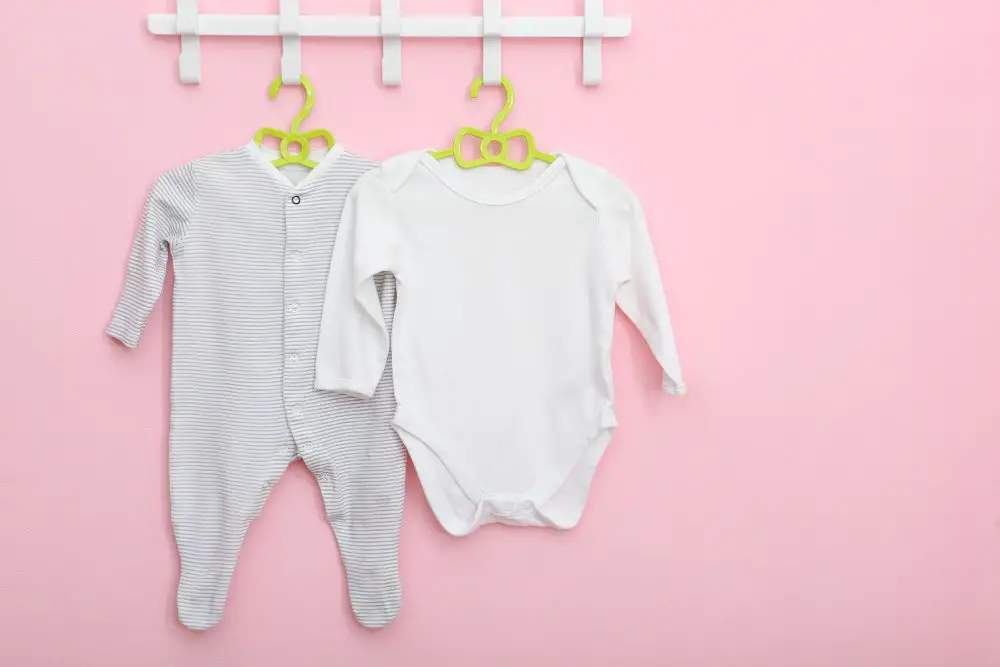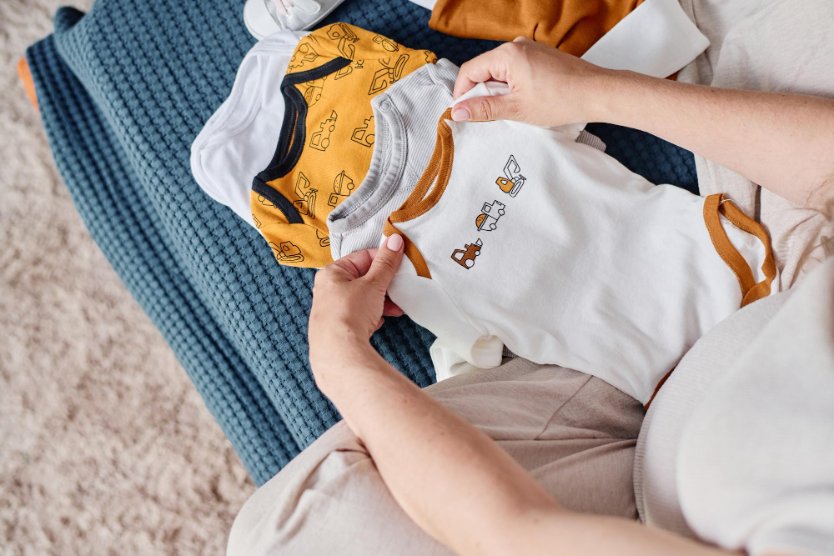Expert insights on choosing safe, comfortable, and sustainable bodysuits for your newborn’s wardrobe essentials
Table of Contents
- Introduction
- Choosing the Right Materials
- Essential Features in Onesies
- Safety Standards & Certifications
- Sizing Guide & Quantities
- Top Brands Comparison
- Sustainability & Environmental Impact
- Care Instructions & Durability
- Seasonal Considerations
- Hospital & First Days
- Layering & Styling Tips
- Expanding the Wardrobe
- Common Issues & Solutions
- Frequently Asked Questions
- Conclusion
Key Takeaways
- Stock 8-10 bodysuits in newborn size and 6-8 in 0-3 months for adequate coverage
- Choose 100% cotton or bamboo fabrics with GOTS certification for safety and comfort
- Look for envelope shoulders, bottom snaps, and flat seams for easier dressing and diaper changes
- Consider sustainable options like bamboo for environmental benefits and superior softness
When it comes to dressing newborns, onesies and bodysuits form the foundation of every baby’s wardrobe. These versatile garments offer both practicality and comfort during those precious first months. Parents need bodysuits that feature soft, safe fabrics, convenient snap closures, and designs that make diaper changes quick and stress-free.
Most parents find that having 8-10 bodysuits in newborn size provides adequate coverage, as babies often need multiple changes throughout the day due to spit-ups and diaper leaks. The best options include lap shoulder necklines that slip easily over baby’s head and strategically placed snap closures that simplify diaper changes.
Choosing the Right Materials

Material selection significantly impacts your baby’s comfort and health. The fabric touching your little one’s skin must be soft, durable, and appropriate for sensitive skin while maintaining proper temperature regulation.
Benefits of Cotton and Organic Alternatives
Cotton remains the top choice for baby bodysuits and onesies. Parents prefer 100% cotton because it’s naturally soft, hypoallergenic, and becomes even softer with each wash. Cotton offers excellent absorbency, helping keep babies dry when they perspire.
Organic cotton provides additional benefits by being grown without harmful pesticides or chemicals. Babies with extra sensitive skin or eczema often respond better to organic cotton options.
| Fabric Type | Benefits | Best For | Price Range |
|---|---|---|---|
| 100% Cotton | Soft, breathable, hypoallergenic | Everyday wear | $8-15 |
| Organic Cotton | Chemical-free, extra gentle | Sensitive skin | $12-25 |
| Bamboo | Ultra-soft, moisture-wicking, antimicrobial | Hot climates, sensitive skin | $15-30 |
| Cotton Blends | Stretchy, shape retention | Active babies | $6-12 |
The Rise of Sustainable Bamboo
Bamboo fabric has emerged as an exceptional alternative for baby clothing. This sustainable option offers natural antibacterial properties, superior breathability, and exceptional softness that often surpasses regular cotton. Bamboo grows rapidly without pesticides, making it an environmentally responsible choice.
“Bamboo fabric stays 3°C cooler than cotton and offers natural antimicrobial protection, making it ideal for babies in humid climates.” – Textile Research Journal Study
Understanding Breathable Fabrics for Sensitive Skin
Breathable fabrics prevent overheating and skin irritation in newborns. Look for looser weaves in cotton that allow air circulation while maintaining warmth. Hypoallergenic materials are especially important for babies with eczema or allergies.
Avoid synthetic materials like polyester for everyday bodysuits. These fabrics trap heat and moisture against the skin, potentially causing rashes, discomfort, overheating, and skin irritation.
Safety Tip
Pre-wash all new bodysuits with mild, fragrance-free detergent before first use. This removes manufacturing residues that might irritate delicate skin. Always check inside seams and tags for rough textures.
Essential Features in Onesies and Bodysuits
When shopping for your newborn’s wardrobe, specific design elements make a significant difference in daily use. The right features save time and keep babies comfortable through all seasons.
Convenience of Snap Closures and Easy Dressing
The most valuable feature in any onesie or bodysuit is the crotch snap closure. These snaps allow diaper changes without completely undressing your baby. With a squirming infant, this design saves considerable time during frequent diaper changes.
Essential Feature Checklist
- 3-4 snap closures rather than just 2 for secure fit
- Envelope shoulders for easy over-the-head dressing
- Flat seams to prevent skin irritation
- Nickel-free snaps to avoid allergic reactions
- Expandable necklines for blowout emergencies
For easier dressing, consider kimono-style bodysuits that wrap around your baby and fasten on the side. These eliminate pulling clothing over your newborn’s head, which many babies dislike.
Innovative Design Features
Modern onesie designs include several convenience features. Expandable shoulders (envelope necklines) allow pulling the bodysuit down over baby’s body during diaper blowouts instead of over the head. Some brands offer shoulder snaps for even easier skin-to-skin contact.
Seasonal Considerations: Footies and Climate Adaptability
Your baby’s comfort depends greatly on appropriate clothing for the weather. In cooler months, footies (bodysuits with attached feet) keep tiny toes warm without separate socks that constantly fall off.
For winter babies, invest in 1-2 quality garments with easy zippers or snaps. Look for designs with fold-over mitts and foot coverings to keep extremities warm. During summer, sleeveless or short-sleeved bodysuits made of lightweight fabrics prevent overheating.
Climate Comfort Guide
Hot Weather (75°F+): Sleeveless bodysuits in cotton or bamboo
Moderate Weather (65-75°F): Short-sleeve cotton bodysuits
Cool Weather (55-65°F): Long-sleeve bodysuits with pants
Cold Weather (Below 55°F): Footies or layered bodysuits
Want personalized recommendations? Take our seasonal baby sleep clothing quiz for customized advice based on your climate and baby’s needs.
Safety Standards & Certifications
Understanding safety standards helps parents make informed decisions about baby clothing. Several organizations regulate and certify baby products for safety and chemical content.
Key Safety Certifications
GOTS Certification
Global Organic Textile Standard ensures organic fibers and environmental safety throughout the supply chain. Look for this certification on organic cotton and bamboo products.
OEKO-TEX Standard 100
Tests for harmful substances in textiles. This certification ensures the fabric is safe for baby’s skin and free from chemicals like formaldehyde and heavy metals.
CPSC Compliance
Consumer Product Safety Commission sets standards for baby products in the US. Compliant products meet flammability and choking hazard requirements.
“Parents should look for clothing with flat seams, nickel-free snaps, and proper sizing to prevent choking hazards. Always check for loose threads or decorative elements that could pose risks.” – Pediatric Safety Expert, Children’s Hospital
Chemical Safety Considerations
Newborn skin is significantly thinner and more permeable than adult skin, making chemical safety crucial. Avoid clothing with strong chemical odors, excessive dyes, or stiff finishes that might contain formaldehyde or other harmful substances.
Sizing Guide & Essential Quantities
How Many Bodysuits Do You Need for a Newborn?
Most parents find that 8-10 bodysuits in newborn size provide adequate coverage for the first few weeks. Since babies often need 2-3 outfit changes daily due to spit-up, diaper leaks, and general messiness, having extras prevents constant laundry cycles.
Newborn Wardrobe Calculator
Newborn Size (5-8 lbs): 8-10 bodysuits
0-3 Months (8-12 lbs): 6-8 bodysuits
3-6 Months (12-16 lbs): 6-8 bodysuits
Tip: Buy mostly 0-3 month sizes since babies outgrow newborn size quickly
Need help with sizing? Use our comprehensive baby clothes size guide tool to determine the perfect fit for your little one.
Will Size 0-3 Months Fit a Newborn?
Size 0-3 months typically fits babies weighing 8-12 pounds and measuring up to 24 inches long. Many babies born over 8 pounds can wear 0-3 month sizes immediately. Understanding size differences helps parents make better purchasing decisions.
| Size | Weight Range | Length Range | Typical Duration |
|---|---|---|---|
| Preemie | Up to 5 lbs | Up to 17″ | Varies |
| Newborn | 5-8 lbs | Up to 21.5″ | 2-8 weeks |
| 0-3 Months | 8-12 lbs | Up to 24″ | 2-3 months |
| 3-6 Months | 12-16 lbs | Up to 27″ | 3 months |
Do You Need Newborn Size Onesies?
Whether you need newborn size depends on your baby’s expected size. Babies under 7 pounds typically need newborn sizes for several weeks. However, larger babies may skip newborn sizes entirely and go straight to 0-3 months.
Top Brands and Where to Shop
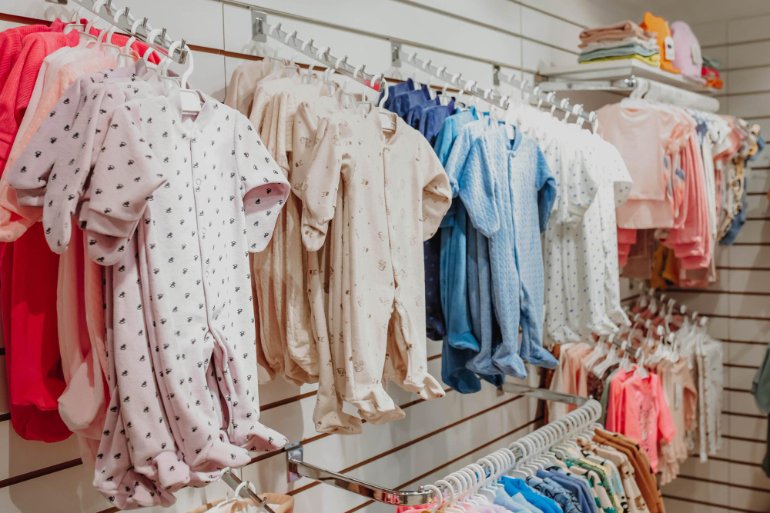
Popular Brands and Their Signature Features
Gerber stands out as a top choice for newborn onesies. Their trademarked Onesies® Brand bodysuits are known for softness and durability. These tend to run small (5-8 lbs for newborn size), so consider sizing up for larger babies.
Gerber
Material: 97% cotton, 3% spandex
Features: Classic snap closures, multiple designs
Price: Starting around $9
Best for: Budget-conscious parents seeking reliable basics
Hudson Baby
Material: 100% cotton
Features: Runs shorter and wider than Gerber
Price: $8-15
Best for: Babies with rounder builds
Carter’s
Material: Cotton blends with thermal options
Features: Envelope necks, nickel-free snaps
Price: $10-20
Best for: Quality multipacks and variety
Tabeeze
Material: GOTS certified organic cotton
Features: Patented shoulder snaps for easy access
Price: $15-25
Best for: Premium organic options
Sustainable and Premium Options
MORI offers premium bamboo and organic cotton bodysuits with exceptional softness. Their sustainable approach includes GOTS certification and thoughtful design for comfort. Burt’s Bees Baby provides GOTS-certified organic cotton options that resist pilling and maintain softness through multiple washes.
Where to Shop
Target remains excellent for buying newborn onesies, offering Gerber, Hudson Baby, and store brands with competitive prices and frequent sales. Their consistent guest ratings above 4 stars and easy return policies make them parent-friendly.
Online shopping provides even more options. Amazon carries nearly every major brand with detailed reviews from other parents. For UK parents, quality baby clothes are available through specialized retailers offering curated selections.
Shopping Tips
- Read size charts carefully as brands vary
- Check return policies before purchasing
- Look for multipack deals for better value
- Read parent reviews for real-world insights
- Consider subscription services for ongoing needs
Sustainability & Environmental Impact
Environmental consciousness increasingly influences parents’ clothing choices. Sustainable options benefit both babies and the planet through reduced chemical exposure and lower environmental impact.
Bamboo: The Sustainable Champion
Bamboo stands as one of the most sustainable textile options available. It grows rapidly without pesticides, requires minimal water compared to cotton, and actively contributes to carbon sequestration. One acre of bamboo yields 10 times more fiber than one acre of cotton.
| Environmental Factor | Cotton | Organic Cotton | Bamboo |
|---|---|---|---|
| Water Usage | High | Medium | Low |
| Pesticide Use | High | None | None |
| Growth Rate | Annual | Annual | Very rapid |
| Carbon Impact | Neutral | Positive | Very positive |
Eco-Friendly Brand Spotlight
Several brands prioritize sustainability while maintaining quality. Boody creates comfortable everyday essentials from organically grown bamboo using closed-loop systems. Mini Rodini offers beautiful sustainable designs with GOTS certification.
“Choosing sustainable baby clothing reduces environmental impact while often providing superior comfort for babies. Bamboo’s natural antimicrobial properties mean fewer chemicals against sensitive skin.” – Sustainable Fashion Institute
Lifecycle Considerations
Sustainable baby clothing extends beyond material choice. Quality construction ensures garments last through multiple children, reducing overall consumption. When babies outgrow items, donating or passing along clothes extends their useful life and reduces waste.
Care Instructions and Durability
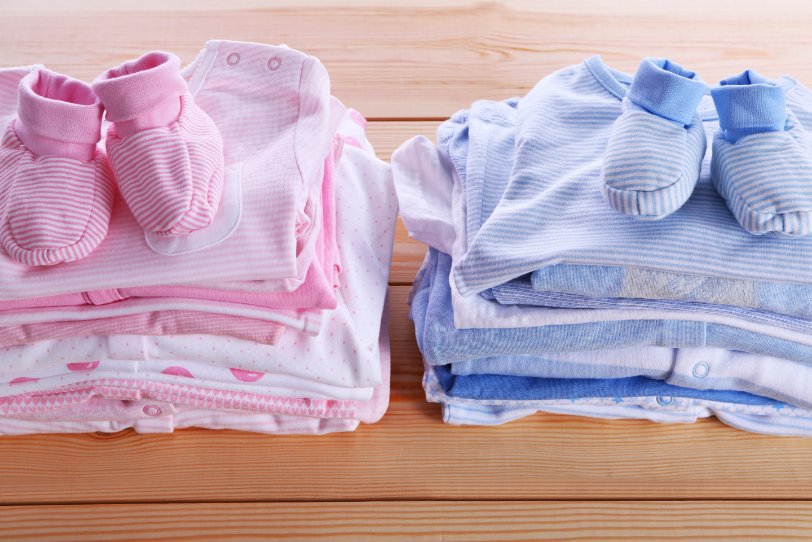
Proper care of baby onesies ensures they last through countless messes and washes. The right washing techniques and material maintenance extend the life of these essential clothing items while keeping them soft against baby’s sensitive skin.
Machine Wash and Tumble Dry: Keeping Onesies Fresh
Always check the care label before washing any baby onesie. Most bodysuits can be machine washed in cold water with mild, baby-safe detergent. Turn onesies inside out before washing to protect designs or embellishments from fading or damage.
Washing Best Practices
- Separate by color to prevent dye transfer
- Pre-treat stains before washing
- Use fragrance-free, gentle detergent
- Wash in cold water to prevent shrinkage
- Avoid fabric softeners that can reduce absorbency
When it comes to drying, tumble dry on low heat is typically safe for most cotton onesies. Some parents prefer air-drying to prevent shrinkage and maintain fabric softness. Remove promptly from the dryer to minimize wrinkles.
Material Longevity and Maintenance
The durability of baby onesies largely depends on fabric quality and proper care. Cotton bodysuits generally withstand frequent washing better than synthetic blends, though they may shrink slightly over time.
Fasteners are often the first elements to wear out. Check snaps and zippers regularly for signs of damage or loosening. Store onesies properly by folding neatly rather than cramming them into drawers.
Storage Tip
For long-term storage or hand-me-downs, clean thoroughly and store in a cool, dry place with acid-free tissue paper. Avoid plastic containers that can trap moisture and lead to mildew.
Seasonal Considerations and Climate Adaptability
Dressing Newborns for Different Seasons
Seasonal dressing requires understanding your baby’s temperature regulation needs. Newborns cannot regulate body temperature effectively, making appropriate clothing crucial for comfort and safety.
Summer Dressing (75°F and above)
Summer heat requires lightweight, breathable fabrics. Sleeveless or short-sleeved bodysuits in cotton or bamboo prevent overheating. Avoid overdressing as babies can overheat quickly in warm weather.
Winter Dressing (Below 60°F)
Cold weather necessitates layering for warmth. Winter essentials include long-sleeved bodysuits as base layers, with additional clothing as needed. Follow the “plus one” rule: dress your baby in one more layer than what you’re comfortable wearing.
Temperature Dressing Guide
80°F+: Sleeveless bodysuit only
70-80°F: Short-sleeve bodysuit
60-70°F: Long-sleeve bodysuit
50-60°F: Bodysuit + light sweater
Below 50°F: Bodysuit + warm layers + outer garment
Get personalized guidance: Our seasonal clothing quiz provides customized recommendations for your specific climate and baby’s comfort needs.
Climate-Specific Considerations
Humid climates benefit from moisture-wicking fabrics like bamboo that keep babies dry and comfortable. In dry climates, cotton provides adequate breathability while maintaining moisture balance against the skin.
Hospital & First Days Essentials
What Should a Newborn Wear in the Hospital?
Hospitals typically provide initial clothing, but bringing your own newborn outfits creates special memories. Pack 2-3 simple bodysuits or sleepers in both newborn and 0-3 month sizes to accommodate varying baby sizes.
How Many Newborn Outfits Should I Take to the Hospital?
Pack a small selection for your hospital stay:
Hospital Packing List
- 2-3 bodysuits in newborn size
- 2-3 bodysuits in 0-3 month size
- 1-2 going-home outfits
- 4-6 pairs of socks
- 2 hats for temperature regulation
- 1-2 sleep sacks or swaddles
What Do Newborns Wear Right After Birth?
Immediately after birth, skin-to-skin contact is prioritized. Hospitals provide blankets and hats for temperature regulation. Your baby’s first outfit typically happens several hours after birth, once initial medical procedures are complete.
Going Home Outfit Considerations
Choose comfortable, easy-to-put-on clothing for the journey home. Avoid outfits with excessive buttons or complicated fastenings. Consider bringing a special “going home” outfit for photos, but have a backup simple option ready.
Layering and Styling Tips
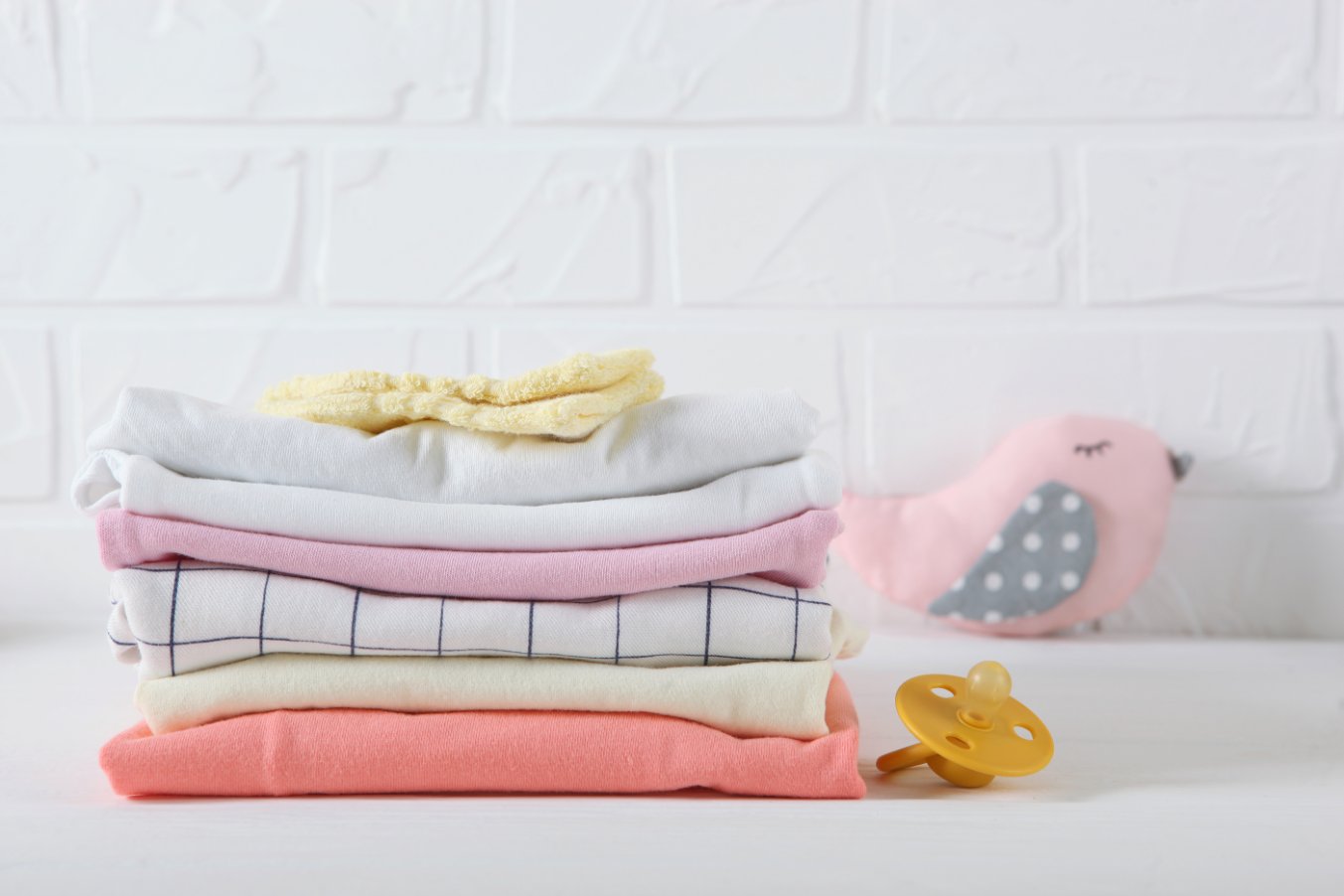
Do Babies Wear Bodysuits Under Everything?
Bodysuits serve as excellent base layers, preventing other clothing from riding up and providing a smooth foundation. In warm weather, a bodysuit alone may suffice. In cooler temperatures, bodysuits work perfectly under pants, sweaters, or sleep sacks.
Mixing and Matching with Other Garments
Start with a cotton onesie as your base layer for comfort against baby’s skin and temperature regulation. For cooler days, layer a long-sleeve bodysuit under pants and cardigans.
Short-sleeve bodysuits pair well with elastic waist pants, overall sets, and light jackets. Choose neutral-colored onesies that work with multiple outfits for versatility.
Layering Essentials
- Base layer: Cotton or bamboo bodysuit
- Middle layer: Pants, leggings, or romper
- Outer layer: Cardigan, sweater, or jacket as needed
- Accessories: Socks, hats, mittens for extremities
Creating Complete Looks with Accessories
Small accessories transform simple onesies into complete outfits. Essential accessories include hats for temperature control, mittens to prevent scratching, socks for warmth, and bibs to protect clothing during feedings.
Coordinate colors rather than exact matches. A simple white onesie with colorful socks and a patterned hat creates an appealing look without sacrificing comfort.
Expanding the Wardrobe
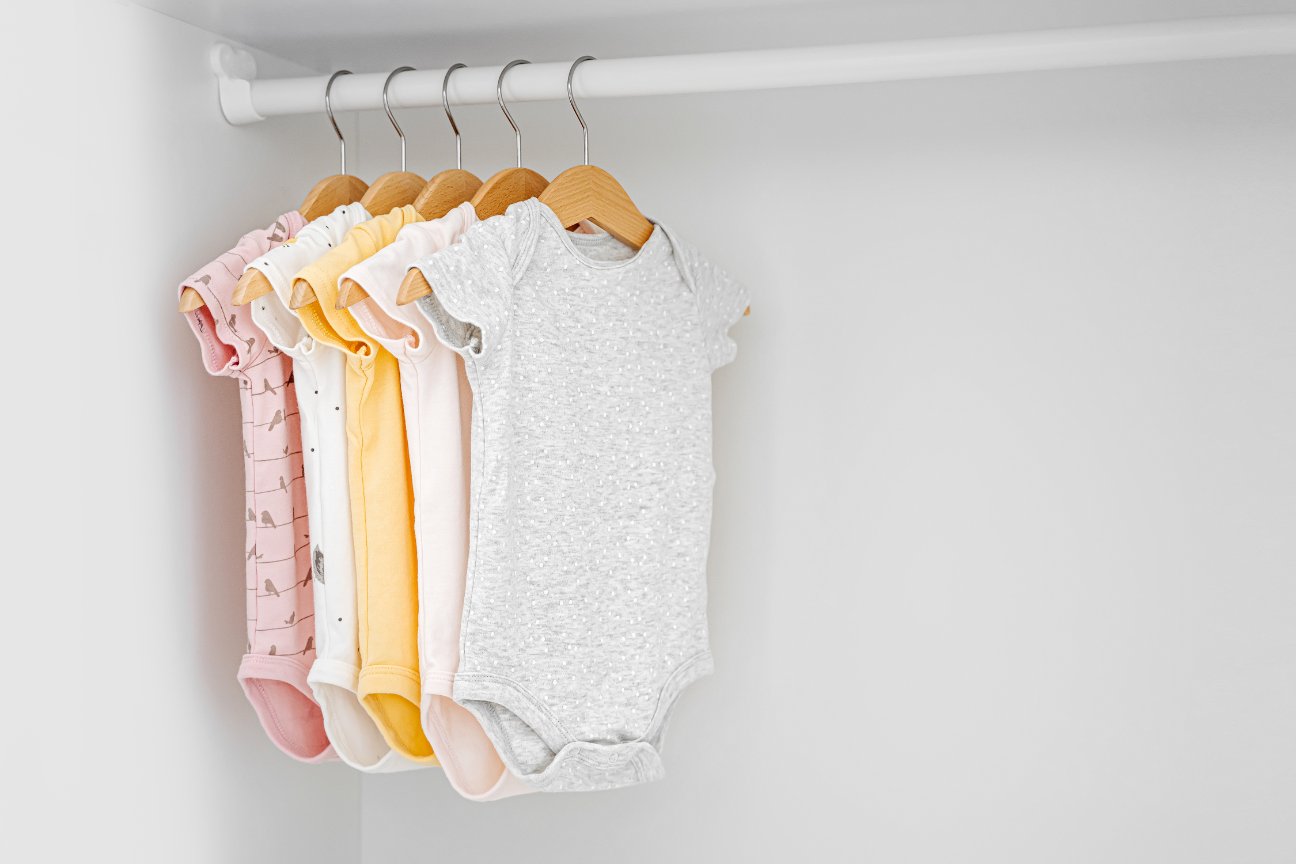
Transition Pieces: Rompers, Sleepers, and Jumpsuits
Rompers are perfect for warm weather and easy diaper changes. They combine a bodysuit with shorts or pants in one piece, typically with bottom snaps. Having 3-4 rompers provides good variety.
Sleepers provide full coverage for cooler temperatures and nighttime. Look for zippers rather than snaps for middle-of-the-night changes. Most sleepers include built-in footies, eliminating the need for separate socks.
Do Newborns Just Wear Sleepsuits?
While sleepsuits are popular for their convenience and coverage, newborns benefit from variety. During wake periods, bodysuits allow for easier diaper access and better temperature regulation. Sleepsuits work best for sleep times and cooler environments.
Adding Variety with Specialized Pieces
Pajamas create bedtime routines and should be made from breathable fabrics like cotton. Having 4-6 pairs allows for inevitable nighttime accidents.
Leggings pair wonderfully with bodysuits, extending their use and providing warmth in cooler weather. They’re stretchy, comfortable, and perfect for layering.
| Garment Type | Best Use | Recommended Quantity | Key Features |
|---|---|---|---|
| Bodysuits | Base layer, everyday wear | 8-10 | Bottom snaps, envelope shoulders |
| Sleepsuits | Sleep, cold weather | 4-6 | Full coverage, easy access |
| Rompers | Warm weather, play | 3-4 | One-piece convenience |
| Leggings | Layering, warmth | 4-5 pairs | Stretchy, comfortable |
Common Issues and Solutions
When Should Babies Not Wear Onesies?
Avoid onesies during certain medical procedures, when rashes develop around snap areas, or if your baby shows signs of overheating. Some babies with reflux may be more comfortable in looser-fitting clothing.
How Often Should I Change My Newborn’s Clothes?
Change clothes whenever they become soiled from spit-up, diaper leaks, or excessive moisture. On average, expect 2-3 clothing changes daily. Keep spare outfits in your diaper bag for unexpected changes.
Should Newborns Wear Short or Long Sleeve Bodysuits?
Choose sleeve length based on temperature and layering needs. Short sleeves work well in warm weather or when layering under other garments. Long sleeves provide warmth and sun protection when worn alone.
Safety Alert
Monitor your baby for signs of overheating: flushed skin, rapid breathing, or excessive fussiness. Remove layers if your baby feels hot to the touch on their chest or back of neck.
When to Stop Using Bodysuits
Most children transition away from bodysuits between 18-24 months, coinciding with potty training. The transition timing depends on your child’s development and your family’s preferences. Some families continue using bodysuits for sleep even after daytime transitions.
Frequently Asked Questions
Conclusion
Selecting the right onesies and bodysuits for your newborn involves balancing comfort, safety, practicality, and environmental considerations. Throughout this comprehensive guide, we’ve explored the essential elements that make baby clothing both functional and beneficial for your little one’s development and well-being.
Key Takeaways for New Parents
Quality matters significantly when choosing newborn clothing. Invest in fabrics that prioritize safety and comfort, such as GOTS-certified organic cotton or sustainably sourced bamboo. These materials provide superior softness while minimizing chemical exposure to your baby’s delicate skin.
Quantity planning prevents stress during those early weeks. Stock 8-10 bodysuits in newborn size and 6-8 in 0-3 months, recognizing that babies grow rapidly and need frequent clothing changes. Focus your budget on 0-3 month sizes since many babies outgrow newborn clothing within weeks.
Safety and Comfort Priorities
Safety certifications provide peace of mind for parents. Look for OEKO-TEX Standard 100 certification, which ensures fabrics are free from harmful chemicals. Choose designs with flat seams, nickel-free snaps, and envelope shoulders that facilitate easy dressing without compromising safety.
Temperature regulation remains crucial for newborn comfort. Bamboo fabrics excel in humid climates due to their moisture-wicking properties and natural antimicrobial benefits. Cotton provides reliable comfort across various temperatures while maintaining breathability and softness.
Sustainable Choices for Future Generations
Environmental consciousness in baby clothing choices benefits both your child and the planet. Bamboo represents the most sustainable option, requiring minimal water and no pesticides while providing exceptional comfort. Sustainable fashion choices ensure a healthier environment for your child’s future.
Quality construction extends garment life, allowing clothes to pass between siblings or families. This reduces overall consumption while maintaining the comfort and safety standards your baby deserves.
Practical Shopping Strategies
Brand selection should balance quality, price, and availability. Gerber provides reliable basics at accessible prices, while premium brands like Tabeeze offer innovative features for parents seeking enhanced convenience. Carter’s delivers excellent middle-ground options with consistent quality and variety.
Shopping timing matters for budget optimization. Stock up during sales events, but avoid overbuying newborn sizes. Focus on versatile pieces that work across seasons and can be layered for different temperatures.
Long-term Wardrobe Planning
Build a foundation wardrobe that grows with your baby. Start with essential bodysuits and gradually add specialized pieces like rompers, sleepers, and seasonal items. This approach prevents overspending while ensuring you have appropriate clothing for every situation.
Care and maintenance extend clothing life significantly. Proper washing techniques, appropriate storage, and regular inspection for wear ensure maximum value from your investment in quality baby clothing.
Final Recommendations
The most successful approach to newborn clothing combines preparation with flexibility. Stock essential quantities in proven materials, but remain adaptable to your baby’s specific needs and growth patterns. Remember that comfort and safety always take precedence over style or trends.
Trust your instincts as a parent while relying on evidence-based information for guidance. Every baby is unique, and what works perfectly for one may need adjustment for another. The key is starting with quality foundations and adapting as you learn your baby’s preferences and needs.
Investing in thoughtfully chosen newborn clothing sets the stage for comfortable, safe, and enjoyable early months with your little one. The time spent researching and selecting appropriate garments pays dividends in daily convenience, baby comfort, and parental peace of mind during this precious period.
Essential Action Items
- Purchase 8-10 bodysuits in newborn size and 6-8 in 0-3 months
- Choose GOTS-certified organic cotton or bamboo fabrics
- Verify safety certifications before purchasing
- Prepare hospital bag with multiple size options
- Establish proper care routines for longevity
- Consider sustainable options for environmental benefits
- Plan seasonal wardrobe additions based on birth timing

